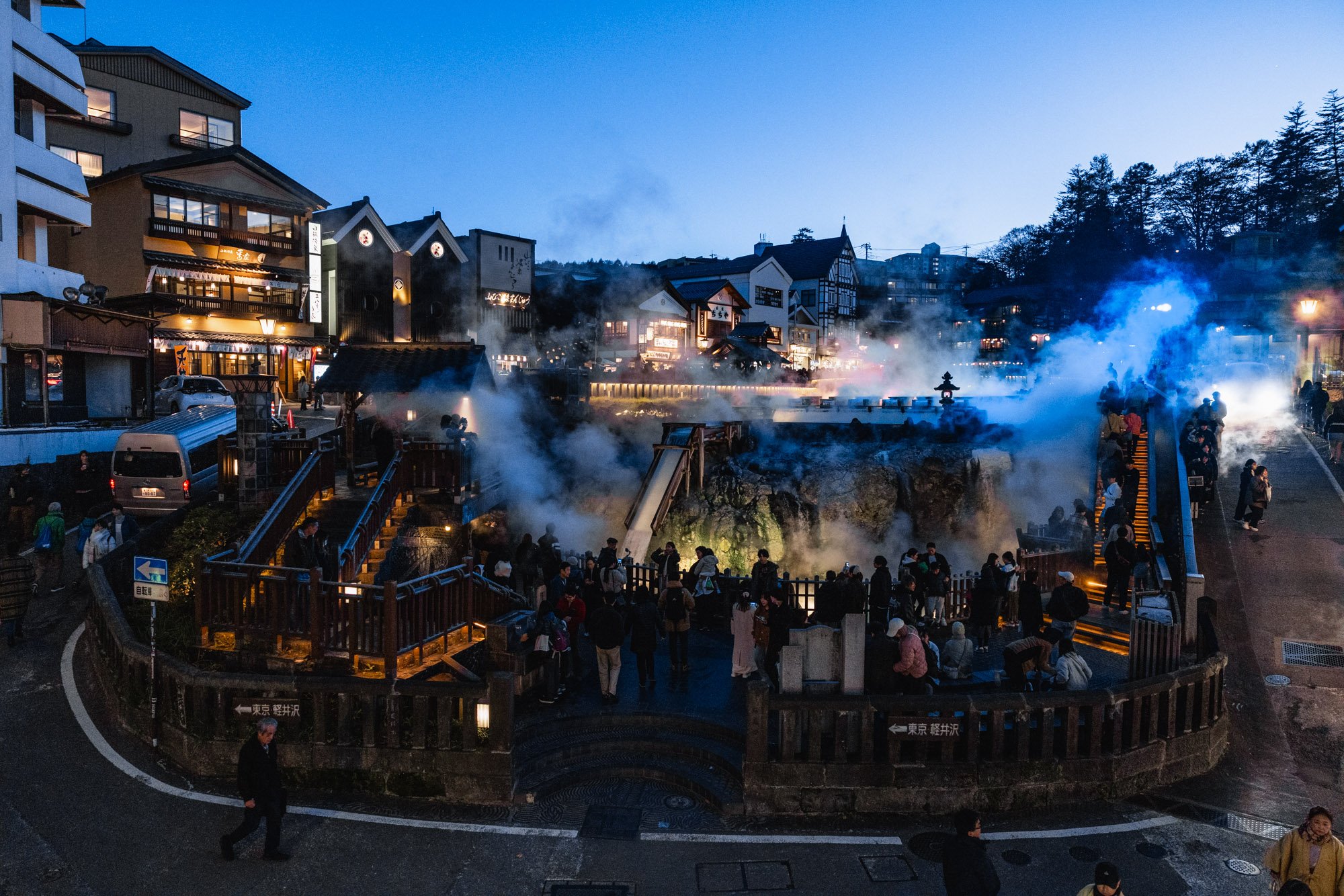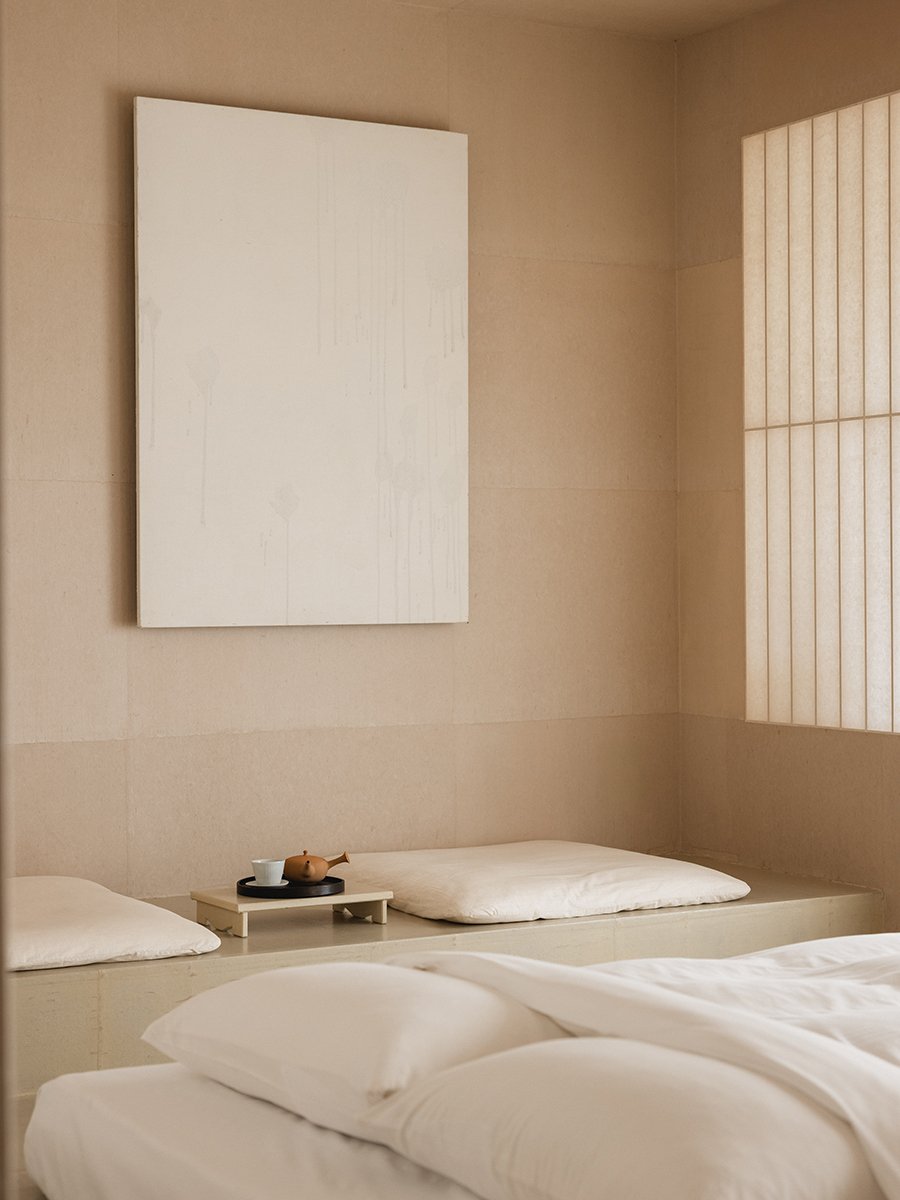The Ultimate Two-Week Japan Itinerary for Experts
Japan is a country filled with bustling cities, serene countryside, and a deep-rooted culture. It’s a paradox of modernity and tradition in just about every aspect - that means it’s all too easy to explore the country on a surface level.
While our beginners Japan itinerary is great for a first-time visitor, if you’re looking to explore Japan in a more personal and authentic way, this is the itinerary for you. Over these two weeks, we’ll get lost in Shiretoko National Park, witness Aomori’s incredible Nebuta Matsuri, climb the Kumano Kodo Daimon-zaka, and hike deep within Iriomote island.
Looking to explore Japan like a local? Make sure to grab your copy of Views from Japan here.
Itinerary Highlights
Upopoy Museum, Hokkaido — Learn about the Ainu; the ancient indigenous people who were the first inhabitants of Hokkaido.
Nebuta Festival, Aomori — One of the most famous festivals in Japan, Nebuta attracts millions of visitors every year.
Kumano Kodo, Wakayama — Kumano Kodo Nakahechi Route is accessible to anyone looking for a path to self-discovery.
Yakusugi Land, Yakushima — Hiking trails pass with thick layers of cloud adding to the mystique of this dramatic landscape.
Kohama Island, Okinawa — Take a private boat trip to a remote subtropical island with a rustic Ryukyu charm.
Days 1–4: Hokkaido
From active volcanoes and diverse wildlife to hearty bowls of ramen in the capital city and world-class festivals, Hokkaido offers an abundance of attractions. As the birthplace of Ainu culture, this prefecture boasts rich historical and cultural highlights, inviting visitors to delve a little deeper into Japan’s northernmost main island. Renowned globally for its snowsport resorts, volcanic landscapes, and national parks teeming with wildlife, Hokkaido stands as a haven for outdoor enthusiasts. Here are four tried and tested places to visit during this Japan itinerary for experts.
Highlights
Upopoy National Ainu Museum – Learn about Japan’s beginnings with a museum dedicated to the Ainu - Japan’s first inhabitants. Traditional arts, dancing, music performances with the mukkuri (mouth harp) and tonkori (five-stringed instrument), traditional dishes, and a reproduction of a kotan (village) are all waiting to be experienced at Upopoy National Ainu Museum.
Noboribetsu Jigokudani – Visit ‘Hell Valley’ just above the town of Noboribetsu Onsen. Hot steam bellows from underneath the volcanic landscape as you venture across the wooden walkways. Orange rocks, steaming craters, and sulphurous smells enhance the otherworldly vibe.
Shiretoko National Park – An incredibly remote area of Hokkaido where Japanese brown bears wander the shores, whales explore the deep waters, and seabirds fly overhead. Over 390 sqkm of land where you can walk, hike, or cycle your way across Shiretoko National Park.
Shiretoko Goko – A set of five lakes formed by the eruption of Mount lo and fed by nearby springs. An elevated lake boardwalk leads to the first of all five, and a 90-minute nature walk is available for those ready to take on the challenge.
Getting Around
As Hokkaido is the biggest of all Japanese prefectures, travelling by rental car is the easiest way to reach some of the more remote areas. That said, Hokkaido has a surprisingly good public transport system with JR Hokkaido servicing almost every corner of the island and local (though less frequent) buses filling in the gaps.
Ready to go? Browse a full selection of Hokkaido hotels here.
Looking for more travel guides and itineraries? Subscribe to the weekly Views from Japan newsletter here.
Days 4–6: Tohoku Region
Tohoku, situated in the northeastern part of Honshu, Japan's main island, is characterised by its rugged terrain, cultural depth, and warm hospitality. Stretching from the Pacific coastline to the towering peaks of the Ou Mountains, this region offers a diverse range of experiences in all four seasons. Delve into Japan’s contemporary art scene at Towada Art Center and Aomori Museum of Art, unwind in Naruko Onsen Town and celebrate the coming of fall at the Nebuta Matsuri. Snow-capped mountains, countless museums and art initiatives around every corner reveal a glimpse into Japan's rich history and natural beauty, in a lesser-explored area of the country.
Highlights
Nebuta Matsuri – Witnessed by over 3 million visitors each year, the Nebuta Matsuri sees over twenty lantern floats (based on kabuki theatre and mythical stories) make their way through the Aomori city.
Towada Art Center – Built as an artistic initiative and designed by Japanese architect Ryue Nishizawa, this museum is a place to see a collection of 36 permanent works of art by Yayoi Kusama, Yoko Ono, Ron Mueck and Jeong Hwa Choi.
Aomori Museum of Art – A uniquely designed Japanese art museum in Aomori prefecture, based on the grounds of a nearby archaeological excavation site. Step inside and you’re met with 19-meter-high ceilings, world-class artwork, woodblock prints by Munakata Shiko and an 8.5-meter tall Aomori Ken dog statue. This Aomori art guide is a great place to start if you’re looking to learn more
Naruko Onsen – A cosy hot spring town that’s that’s the birthplace of the Kokeshi doll. With a history of ryokans dating back over 1200 years, it’s a notable area for travellers looking to experience a part of traditional Japan, soak in authentic onsen waters, and glimpse into a part of the country’s history.
Getting Around
The Tohoku Shinkansen branches off into two mini lines, Yamagata, and Akita. Together they cover much of the Tohoku region and local JR trains and buses fill in the missing pieces. It’s a more sparsely populated area than the Kanto region, but equally as convenient and efficient to get around.
Ready to go? Browse a full selection of Tohoku hotels here.
Days 6-8: Wakayama
Wakayama, a place where ancient pathways lead to hidden temples and waterfalls cascade through landscapes covered in mist, all just a couple of hours away from Osaka. Follow the time-worn trails of the Kumano Kodo pilgrimage routes, including the iconic Daimon-zaka slope, as they wind their way to the revered Three Grand Shrines of Kumano: Hongu Taisha, Hayatama Taisha, and Nachi Taisha. Immerse yourself in the spiritual surroundings of Seiganto-ji Temple, nestled beside the majestic Nachi Waterfall. Visiting Wakayama is like stepping back in time, walking time-trodden trails, and connecting with nature all at the same time.
Highlights
Seiganto-ji Temple – A stone’s throw away from Nachi Falls, this three-storey temple is the oldest surviving structure in the Kumano area. A highlight is the view of the waterfall where a Shinto priest makes a daily offering to this natural wonder.
Kumano Hongu Taisha – Fronted by Japan’s tallest torii gate, Kumano Hongu Taisha stands as the head of over 3000 Kumano shrines across the country. Visit in August to witness the Yata-no-Hi Fire Festival involving fireworks, traditional music, and a flaming shrine.
Kumano Kodo Daimon-zaka – A 600-meter stone staircase with 267 individual steps. Experience part of the Kumano Kodo pilgrimage, catch a glimpse of Nachi waterfall and walk among centuries-old dense forests of Japanese cedars and bamboo groves.
Nachi Waterfall – Standing 113 metres tall, Nachi is Japan’s tallest waterfall and a UNESCO World Heritage Site. The spray of the falls is said to bring longevity and good fortune to those it touches.
Getting Around
Using a car to get around Wakayama will make things easier, but it’s possible to use only buses and local trains operated by JR and private lines like Nakai and Kintetsu.
Ready to go? Browse a full selection of Wakayama hotels here.
Days 8-10: Yakushima Island
A subtropical island in Kagoshima prefecture renowned for its deep jungles, towering mountains, and golden sandy beaches. Traverse the island's dense forest trails, where ancient Yakusugi cedar trees stand tall amidst a landscape steeped in intrigue. Visitors will come across Ohko-no-taki waterfall, plunging 88 meters below, and Senpiro-no-taki waterfall which sits at the foot of Mt. Mocchomu. Keep a keen eye out for the island's diverse wildlife, from playful tanuki (raccoon dogs) and yakushika, to over 167 species of birds.
Highlights
Ohko-no-taki Waterfall – 88 metres high and surrounded by Yaku monkeys and Yaku deer only found on this island. Water from the Osawa River can be heard crashing into the pools below.
Yakusugi Land – Once a backdrop for storytellers, ancient myths and fairytales, now filled with cedar trees and multiple hiking routes. A dramatic landscape begs to be explored, and trees older than 1,000 years greet travellers as they pass.
Senpiro-no-taki Waterfall – Translated as ‘one thousand hands’, Senpiro-notaki waterfall sits at the foot of Mt. Mocchomu flanked by a granite gorge filled with greenery. 30 minutes away is a panoramic observation deck, the higher floor giving the best view of the waterfall from above.
Getting Around
Zero trains and an infrequent bus make getting around on Yakushima Island tricky. The best way is by rental car and there are more outlets on the island than post offices. You can bring your own on the ferry over, but it’s often cheaper to rent.
Ready to go? Browse a full selection of Yakushima Island hotels here.
Discover more about Naoshima and hundreds of other unique destinations in my brand new guidebook, Views from Japan.
Days 10–14: Okinawa
Comprised of 160 islands spanning 400 kilometres, choosing where to visit in Japan’s southernmost prefecture is an important decision. Our adventure begins on Ishigaki Island where you’ll be exploring immaculate beaches, black pearl coral reefs, and crystal clear waters. We’ll then venture to Taketomi Island to weave among the sandy lanes and small villages - a wonderful example of traditional Ryukyu culture and a slower pace of life. Finally, in Iriomote we’ll hike hidden waterfalls, kayak through jungles, and unleash our inner adventurer.
Highlights
Ishigaki Island – Relax on golden sand beaches, hike through lush jungles, kayak through rich mangroves, and dive with manta rays. Ishigaki Island is a tropical paradise with a huge amount to offer inquisitive travellers.
Taketomi Island – A 1,500-acre island with a population of just 300 people. Three small villages to explore through narrow sandy lanes, and traditional Ryuku houses and gardens. Local highlights include soba at Takenoko, coffee cocktails at Yaaraa Cafe, and handcrafted Okinawan ceramics at Atelier Gokouya.
Bags packed? Discover what Taketomi Island has to offer here.
Iriomote Island – Explore deep inside UNESCO-protected jungle, hike hidden waterfalls accessible only by foot, kayak through dense mangrove jungles, and descend into ancient subterranean caves. Experienced guides are a must.
Iriomote Jungle Hike – Led by the highly experienced Takafusa Morimoto, this personalised excursion will have you traverse across rocky waterways while learning about local wildlife including wildcats and crested serpent eagles.
Getting Around
There’s a bus that runs 5 times a day with a ¥1000 three-day pass, but renting a car is the best way to explore the island freely. As the second biggest island in Okinawa, cycling isn't entirely practical but there are several outlets on the island if you’re feeling brave.
Ready to go? Browse a full selection of Okinawa hotels here.
Affiliate Disclosure: Please note this post may contain affiliate links. By purchasing via these links, I may earn a small commission at no additional cost to you. It’s a big help to keep this site up and running and I only promote products and services that I personally use and trust. Thanks!
Tired of seeing the same recommendations for over-crowded locations in Japan?
Introducing Views from Japan, a brand new travel guidebook welcoming you to join a travel community that shares a deep passion for Japan and its unique cultural traditions. Across 280 detail-packed pages, I give you all of the tools you need to create a unique and memorable trip to Japan, whether you are travelling for a solo trip, honeymoon or family adventure.























